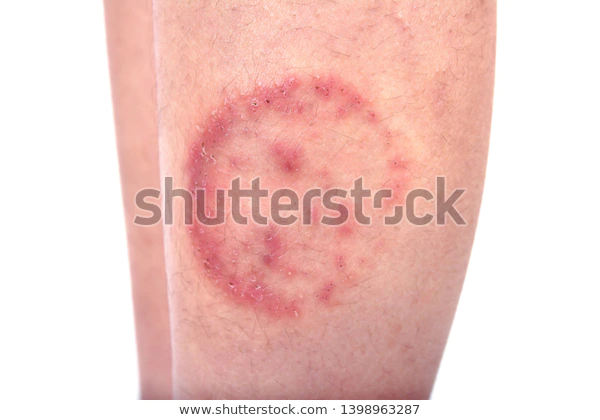We are surrounded by millions of species of fungi. When they come in contact with our skin, it can lead to fungal infections. It is a fairly common condition, affecting people all over the world. Globally, over 300 million people suffer from fungal infections. (Source: Global Action Fund For Fungal Infections) A fungal infection is not always dangerous. But if it is left untreated, it can have long-term consequences.
Symptoms of Fungal Infections
Fungal infections can occur anywhere on your body. The symptoms vary with the type of fungal infection. Generally, people may experience one or more of the following symptoms in the affected areas:
- Scaly skin
- Patchy hair loss
- Irritation
- Itching
- Redness
- Blisters
- Swelling
Types of Fungal Infections
There are 4 major types of fungal infections.
- Ringworm
Also known as tinea corporis, ringworm is a skin infection caused by a fungus that lives on the dead tissues of our skin, hair and nails. It gets its name from the ring-shaped rash it causes on the infected area. It can occur on any part of the body, but is more commonly seen on the arms and the legs. It can spread through direct contact with infected people or animals. Indirectly, you may contract it from the clothing or furniture used by an infected person. It spreads faster in heat and humidity.
- Jock Itch
It appears on the body as a red, itchy rash which is generally circular in shape. The fungus thrives in warm and humid environments. Jock itch often occurs on the groin, buttocks and inner thighs. The symptoms include redness, itching, burning, cracking, flaking or peeling of the skin in the affected area. It is mildly contagious and can spread with direct or indirect contact with the affected person.
- Athlete’s Foot
It is a common fungal infection that affects the foot. The fungi responsible for it thrive in moist and warm environments, such as shoes, socks, locker rooms, swimming pools and public showers. The symptoms include cracking, peeling, scaly feet, blisters on the feet and red, burning or itchy skin on the feet. It is commonly seen in people who wear shoes very tightly, who don’t change their sweaty socks regularly and who use public pools and baths.
- Yeast Infections
They include infections of the skin and the nails caused by the Candida fungi. Like any fungi, it thrives in moist and warm environments. It generally occurs in areas such as armpits, groin, nails and corners of the mouth. It is the most common reason for diaper rash in infants, fungal toe nails, oral thrush and vaginal yeast infections. Antibiotics, chemotherapy and steroid therapy increase the risk of yeast infections. It is seen more in people with diabetes and obesity. It is generally not contagious. But in some settings, people with weakened immune systems may catch the infection.
Read more on the different types of fungal infections: https://www.drbatras.ae/fungal-infections-of-the-skin-hair-or-nails
Risk Factors of Developing Fungal Infections
Several factors can put you at risk of contracting fungal infections. Let’s take a look at some of them:
- Residing in a humid or warm environment
- Heavy sweating
- Failure to keep the skin clean and dry
- Wearing tight clothing or footwear
- Sharing items like shoes, clothing, towels or bedding
- Being a part of activities involving frequent skin-to-skin contact
- Coming in contact with animals that may be infected
- Having a weak immune system due to immunosuppressant drugs, cancer treatment or conditions such as HIV
Treatment of Fungal Infections
Antifungal medications are used to treat fungal infections. They work to either kill the fungi or prevent it from growing and thriving. The medications come in a variety of forms, such as ointments or creams, pills, powders, sprays and shampoos. If you’re looking for a natural and safe way to treat fungal infections, homeopathy is your solution.
Homeopathy for Fungal Infections
Homeopathic medicines are made from natural ingredients and are therefore free from side-effects. Homeopathic treatment does not suppress the symptoms and flare-ups but it goes to the root cause of your infection and treats it, thus providing long-term relief. Fungal infection treatment in homeopathy also effectively treats the underlying conditions responsible for developing or aggravating your infection, such as low immunity. Homeopathic treatment helps to reduce the severity of the symptoms as well as the possibility of recurrence.
A report published in the International Journal of Health Sciences and Research studied the efficacy of homeopathy in treating Dermatophytosis (ringworm). Homeopathic treatment showed a significant result with cost effective and safe administration without any side effects.
Over the past 35 years, Dr Batra’s has treated more than 140 thousand patients with skin problems. Our team of homeopathic doctors along with skin specialists will determine a homeopathic treatment most suited for you based on your unique causes and symptoms. Book an appointment with us https://www.drbatras.ae/book-an-appointment and let our homeopathic specialist guide you towards long-term relief from fungal infections.

